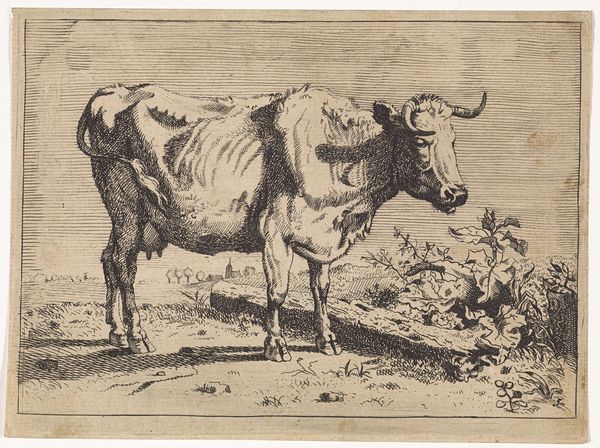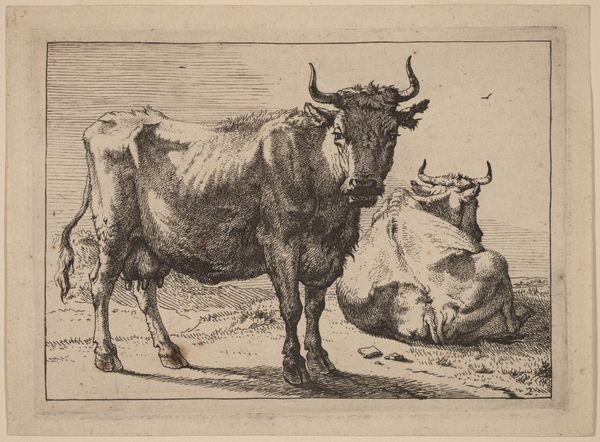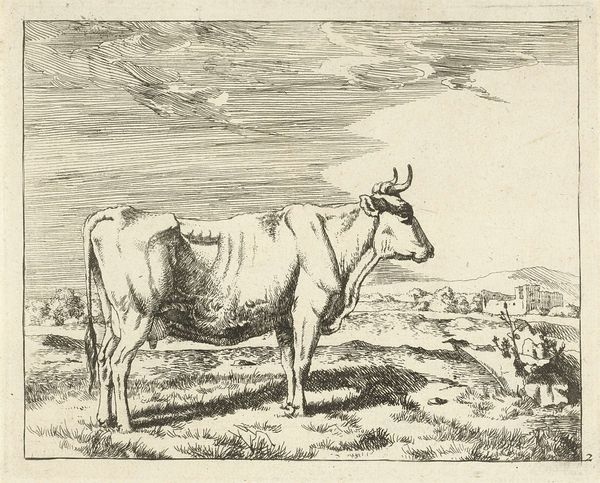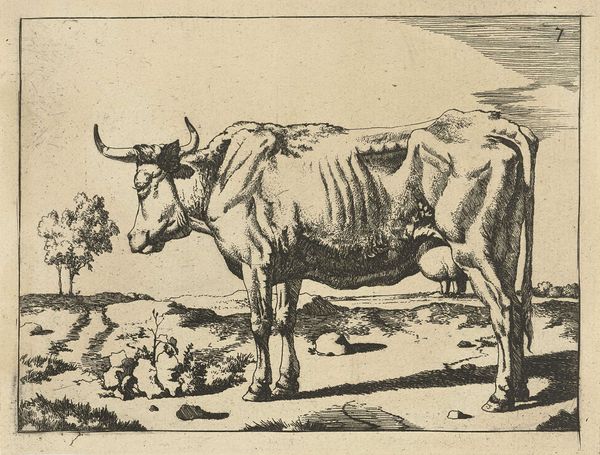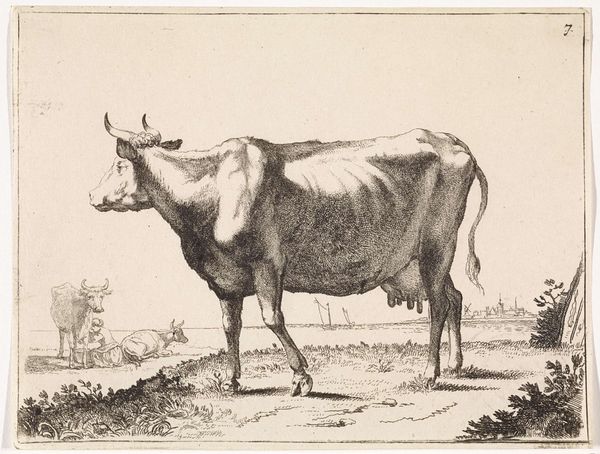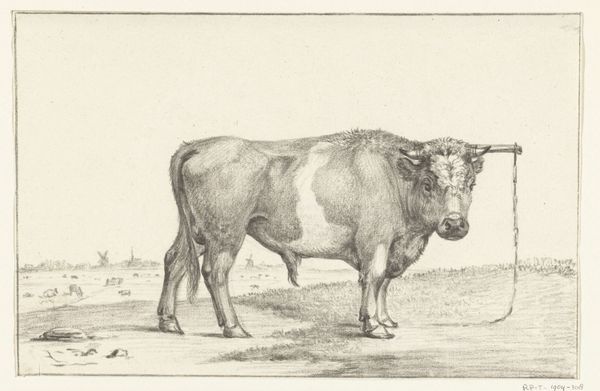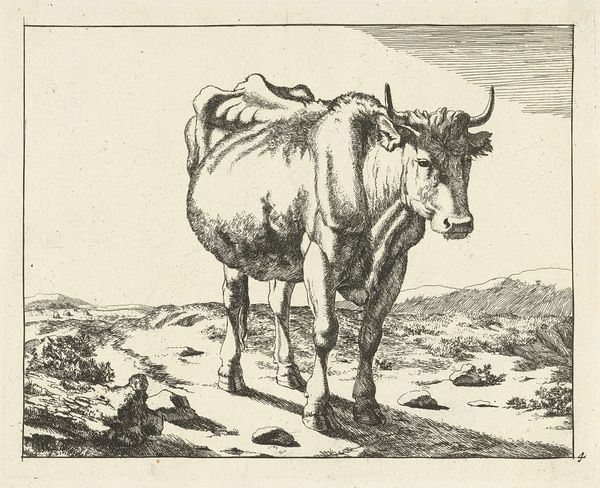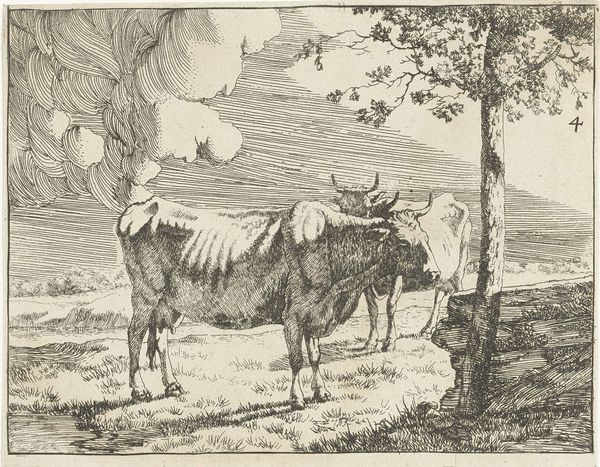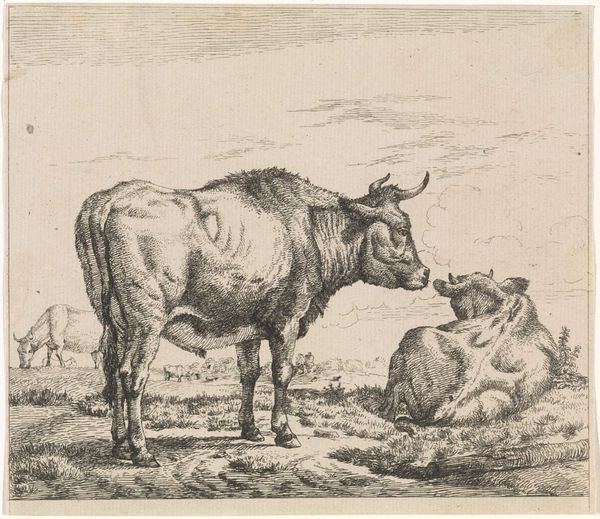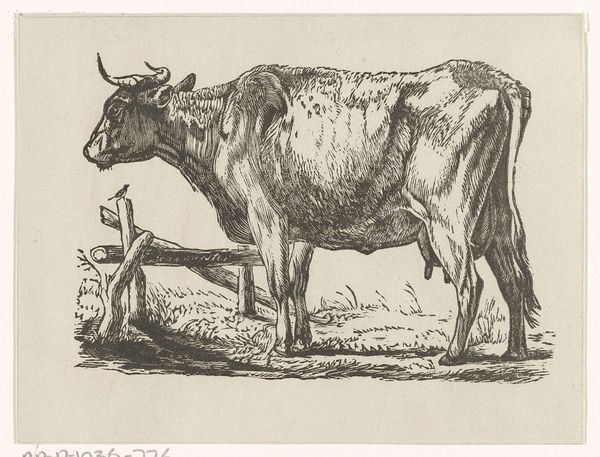
print, etching, engraving
#
animal
#
dutch-golden-age
# print
#
etching
#
old engraving style
#
landscape
#
genre-painting
#
engraving
Dimensions: height 130 mm, width 195 mm
Copyright: Rijks Museum: Open Domain
Editor: This is "Weiland met koeien," or "Pasture with Cows," by Reinier van Persijn, an engraving and etching from 1641. The detail is amazing, especially considering the medium. The cows almost look like sculptures. What’s your take on this piece? Curator: I'm drawn to the deliberate craft of the printmaking itself. Consider the laborious process – the tooling of the copper plate, the precise application of acid. It elevates the depiction of everyday livestock, almost monumentalizing agricultural labor and pastoral life. How does this relate to Dutch Golden Age society? Editor: I hadn’t thought about the labor involved. So, you’re suggesting that this relatively humble scene gains importance because of the artist's effort and its relationship to Dutch industry and the animal’s utility for the growing population? Curator: Exactly. Think about who would have commissioned or bought this. It reflects a rising merchant class, investing in and celebrating their prosperity derived from trade, of which agricultural production was certainly a large piece. Note how the foreground elements draw attention to craft itself: the etching work defining individual strands of fur, the detailed flora and rock. Editor: So, it’s less about romanticizing nature and more about showcasing the *making* and celebrating Dutch economic power? I find the seemingly random scratchings used to shade the landscape kind of interesting. Almost makes me think the artist was doing the least to still render depth and atmospheric perspective to make way for the detailed focus of the animals as resources. Curator: Indeed. This “randomness” in mark-making contrasts starkly with the deliberate detail elsewhere. Was the intention purely pictorial, or did van Persijn intentionally imply that some processes take less time than others? Editor: This makes me see the whole thing in a completely different way, recognizing this image is just one result of complex processes. Thank you! Curator: And you helped me notice something else too; looking at the material rendering, I can recognize a parallel between it and modes of land use occurring in Dutch society.
Comments
No comments
Be the first to comment and join the conversation on the ultimate creative platform.

